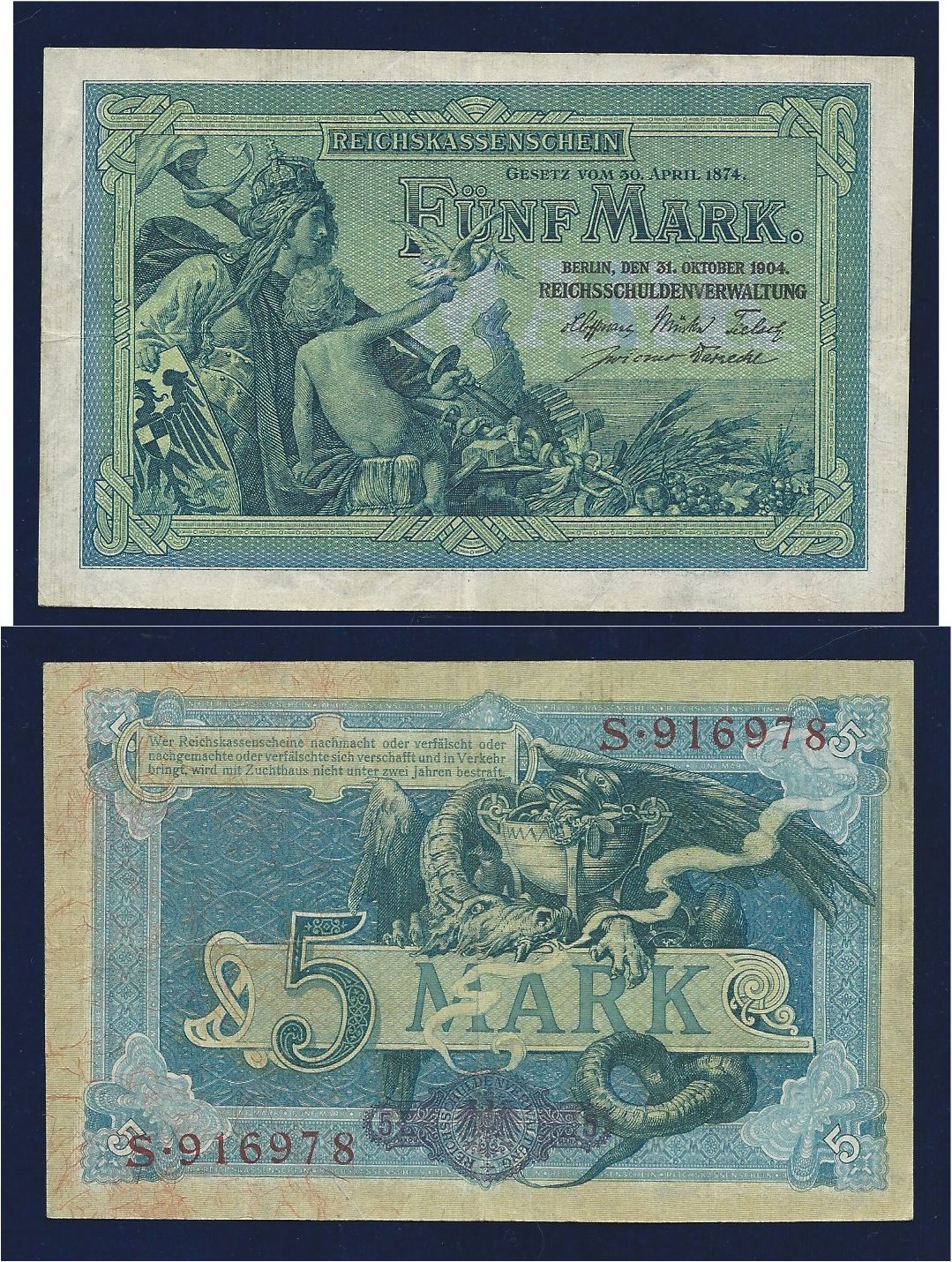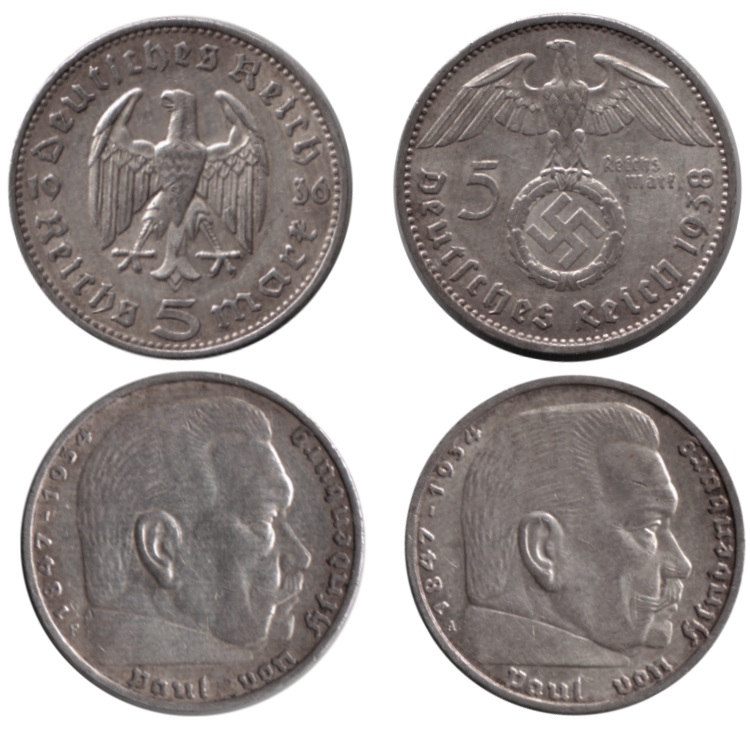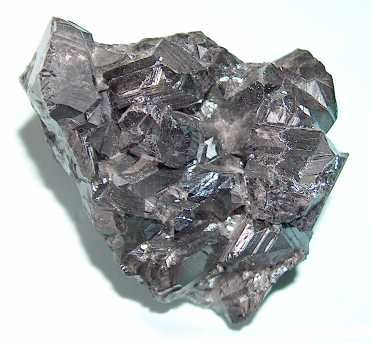|
Papiermark
The Papiermark (; 'paper mark', officially just ''Mark'', sign: ℳ) was the German currency from 4 August 1914 when the link between the Goldmark and gold was abandoned, due to the outbreak of World War I. In particular, the Papiermark was the currency issued during the hyperinflation in Germany of 1922 and 1923. History From 1914, the value of the mark fell. The rate of inflation rose following the end of World War I and reached its highest point in October 1923. The currency stabilized in November 1923 after the announcement of the creation of the Rentenmark, although the Rentenmark did not come into circulation until 1924. When it did, it replaced the Papiermark at the rate of 1 trillion (1012)-ℳ to RM1. On 30 August 1924 the Rentenmark was replaced by the Reichsmark. In addition to the issues of the government, emergency issues of both tokens and paper money, known as ''Kriegsgeld'' (war money) and ''Notgeld'' (emergency money), were produced by local authoritie ... [...More Info...] [...Related Items...] OR: [Wikipedia] [Google] [Baidu] |
German Gold Mark
The German mark (german: Goldmark ; sign: ℳ) was the currency of the German Empire, which spanned from 1871 to 1918. The mark was paired with the minor unit of the pfennig (₰); 100 pfennigs were equivalent to 1 mark. The mark was on the gold standard from 1871–1914, but like most nations during World War I, the German Empire removed the gold backing in August 1914, and gold and silver coins ceased to circulate. After the fall of the Empire due to the November Revolution of 1918, the mark was succeeded by the Weimar Republic's mark, derisively referred to as the Papiermark ("Paper mark") due to hyperinflation in the Weimar Republic from 1918–1923. History The introduction of the German mark in 1873 was the culmination of decades-long efforts to unify the various currencies used by the German Confederation.pp 205-218 https://books.google.com/books?id=GrJCAAAAIAAJ&pg=PA205#v=onepage&q&f=false The Zollverein unified in 1838 the Prussian and South German curre ... [...More Info...] [...Related Items...] OR: [Wikipedia] [Google] [Baidu] |
Rentenmark
The Rentenmark (; RM) was a currency issued on 15 October 1923 to stop the hyperinflation of 1922 and 1923 in Weimar Germany, after the previously used "paper" Mark had become almost worthless. It was subdivided into 100 ''Rentenpfennig'' and was replaced in 1924 by the Reichsmark. History After the Occupation of the Ruhr in early 1923 by French and Belgian troops, referred to as the ''Ruhrkampf'', the German government of Wilhelm Cuno reacted by announcing a policy of passive resistance. This caused the regional economy of the Ruhr, the industrial heartland of Germany, to almost stop. The occupation authorities reacted to strikes and sabotage with arrests and deportations. Those displaced and left without income by the ''Ruhrkampf'' and their families fell back on public income support. Tax revenues plunged as economic activity slowed. The government covered its need for funds mainly by printing money. As a result, inflation spiked and the Papiermark went into freefall o ... [...More Info...] [...Related Items...] OR: [Wikipedia] [Google] [Baidu] |
German Reichsmark
The (; sign: ℛℳ; abbreviation: RM) was the currency of Germany from 1924 until 20 June 1948 in West Germany, where it was replaced with the , and until 23 June 1948 in East Germany, where it was replaced by the East German mark. The Reichsmark was subdivided into 100 s (Rpf or ℛ₰). The Mark is an ancient Germanic weight measure, traditionally a half pound, later used for several coins; whereas (''realm'' in English), comes from the official name for the German state from 1871 to 1945, . History The Reichsmark was introduced in 1924 as a permanent replacement for the Papiermark. This was necessary due to the 1920s German inflation which had reached its peak in 1923. The exchange rate between the old Papiermark and the Reichsmark was = 1012 ℳ (one trillion in American English and French, one billion in German and other European languages and British English of the time; see long and short scale). To stabilize the economy and to smooth the transition, the Papierm ... [...More Info...] [...Related Items...] OR: [Wikipedia] [Google] [Baidu] |
Aluminium
Aluminium (aluminum in AmE, American and CanE, Canadian English) is a chemical element with the Symbol (chemistry), symbol Al and atomic number 13. Aluminium has a density lower than those of other common metals, at approximately one third that of steel. It has a great affinity towards oxygen, and Passivation (chemistry), forms a protective layer of Aluminium oxide, oxide on the surface when exposed to air. Aluminium visually resembles silver, both in its color and in its great ability to reflect light. It is soft, Magnetism, non-magnetic and ductility, ductile. It has one stable isotope, 27Al; this isotope is very common, making aluminium the twelfth most common element in the Universe. The radioactivity of Aluminum-26, 26Al is used in Radiometric dating, radiodating. Chemically, aluminium is a post-transition metal in the boron group; as is common for the group, aluminium forms compounds primarily in the +3 oxidation state. The aluminium cation Al3+ is small and h ... [...More Info...] [...Related Items...] OR: [Wikipedia] [Google] [Baidu] |
Zinc
Zinc is a chemical element with the symbol Zn and atomic number 30. Zinc is a slightly brittle metal at room temperature and has a shiny-greyish appearance when oxidation is removed. It is the first element in group 12 (IIB) of the periodic table. In some respects, zinc is chemically similar to magnesium: both elements exhibit only one normal oxidation state (+2), and the Zn2+ and Mg2+ ions are of similar size.The elements are from different metal groups. See periodic table. Zinc is the 24th most abundant element in Earth's crust and has five stable isotopes. The most common zinc ore is sphalerite (zinc blende), a zinc sulfide mineral. The largest workable lodes are in Australia, Asia, and the United States. Zinc is refined by froth flotation of the ore, roasting, and final extraction using electricity ( electrowinning). Zinc is an essential trace element for humans, animals, plants and for microorganisms and is necessary for prenatal and postnatal development. It ... [...More Info...] [...Related Items...] OR: [Wikipedia] [Google] [Baidu] |
Iron
Iron () is a chemical element with symbol Fe (from la, ferrum) and atomic number 26. It is a metal that belongs to the first transition series and group 8 of the periodic table. It is, by mass, the most common element on Earth, right in front of oxygen (32.1% and 30.1%, respectively), forming much of Earth's outer and inner core. It is the fourth most common element in the Earth's crust. In its metallic state, iron is rare in the Earth's crust, limited mainly to deposition by meteorites. Iron ores, by contrast, are among the most abundant in the Earth's crust, although extracting usable metal from them requires kilns or furnaces capable of reaching or higher, about higher than that required to smelt copper. Humans started to master that process in Eurasia during the 2nd millennium BCE and the use of iron tools and weapons began to displace copper alloys, in some regions, only around 1200 BCE. That event is considered the transition from the Bronze Age to the ... [...More Info...] [...Related Items...] OR: [Wikipedia] [Google] [Baidu] |
Notgeld
''Notgeld'' (German for "emergency money" or "necessity money") refers to money issued by an institution in a time of economic or political crisis. The issuing institution is usually one without official sanction from the central government. This usually occurs when not enough state-produced money is available from the central bank. In particular, ''notgeld'' generally refers to money produced in Germany and Austria during World War I and the interwar period. Issuing institutions could be a town's savings banks, municipalities and private or state-owned firms. Nearly all issues contained an expiry date, after which time they were invalid. Issues without dates ordinarily had an expiry announced in a newspaper or at the place of issuance. ''Notgeld'' was mainly issued in the form of (paper) banknotes. Sometimes other forms were also used: coins, leather, silk, linen, wood, postage stamps, aluminium foil, coal, and porcelain; there are also reports of elemental sulfur being used, a ... [...More Info...] [...Related Items...] OR: [Wikipedia] [Google] [Baidu] |
Silver
Silver is a chemical element with the Symbol (chemistry), symbol Ag (from the Latin ', derived from the Proto-Indo-European wikt:Reconstruction:Proto-Indo-European/h₂erǵ-, ''h₂erǵ'': "shiny" or "white") and atomic number 47. A soft, white, lustrous transition metal, it exhibits the highest electrical conductivity, thermal conductivity, and reflectivity of any metal. The metal is found in the Earth's crust in the pure, free elemental form ("native silver"), as an alloy with gold and other metals, and in minerals such as argentite and chlorargyrite. Most silver is produced as a byproduct of copper, gold, lead, and zinc Refining (metallurgy), refining. Silver has long been valued as a precious metal. Silver metal is used in many bullion coins, sometimes bimetallism, alongside gold: while it is more abundant than gold, it is much less abundant as a native metal. Its purity is typically measured on a per-mille basis; a 94%-pure alloy is described as "0.940 fine". As one of th ... [...More Info...] [...Related Items...] OR: [Wikipedia] [Google] [Baidu] |
Westphalia
Westphalia (; german: Westfalen ; nds, Westfalen ) is a region of northwestern Germany and one of the three historic parts of the state of North Rhine-Westphalia. It has an area of and 7.9 million inhabitants. The territory of the region is almost identical with the historic Province of Westphalia, which was a part of the Kingdom of Prussia from 1815 to 1918 and the Free State of Prussia from 1918 to 1946. In 1946, Westphalia merged with North Rhine, another former part of Prussia, to form the newly created state of North Rhine-Westphalia. In 1947, the state with its two historic parts was joined by a third one: Lippe, a former principality and free state. The seventeen districts and nine independent cities of Westphalia and the single district of Lippe are members of the Westphalia-Lippe Regional Association (''Landschaftsverband Westfalen-Lippe''). Previous to the formation of Westphalia as a province of Prussia and later state part of North Rhine-Westphalia, t ... [...More Info...] [...Related Items...] OR: [Wikipedia] [Google] [Baidu] |

.jpg)




